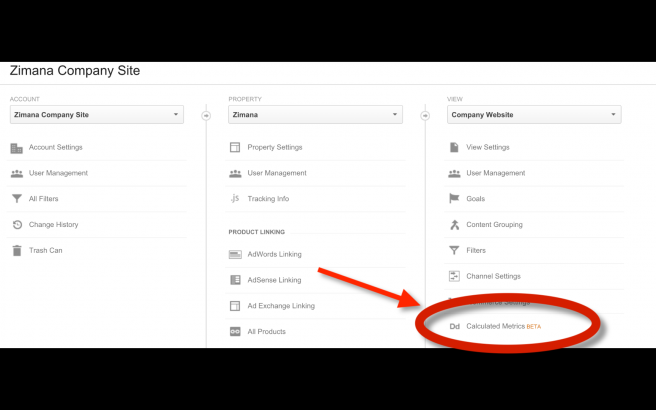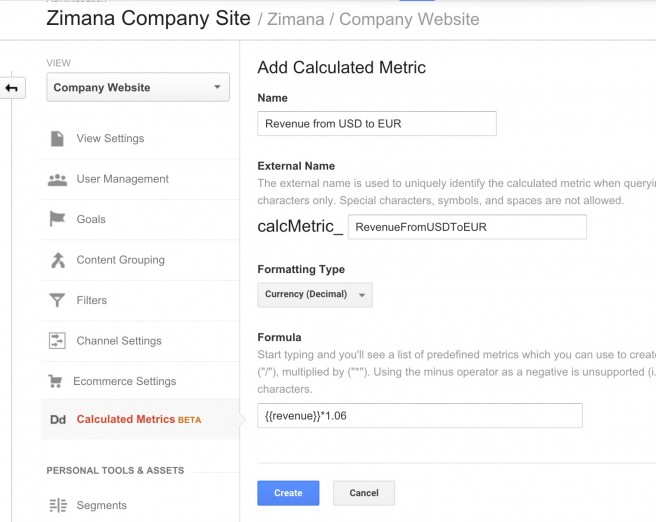You see old friend I brought more soldiers than you did
— King Leonidas, as played by Gerrard Butler, in the movie "300"
In the movie 300, the warrior-leader of Sparta, King Leonidas, responded confidently when he was asked why he had so few soldiers to potentially fight against the Persians. His character knew that motivations, not physical numbers, is at the heart of making a difference.
The same can be said about quoting vanity metrics - numbers of on site visits or consumptions rather than noting engagement - conversions or describing the audience that responding to the metrics.
To be as wise as King Leonidas in your digital strategy, you should look for audience-related metrics - metrics that can help describe or start a deeper discussion of activity that happens because of Internet of Things (IoT) devices that are involved in a campaign.
First a quick definition of vanity metrics and audience metrics:
Vanity metrics were acceptable at the beginning, where companies were first trying to build audiences for their websites. Today the internet is being expanding the
Customer experience is starting to drive digital marketers away from an overreliance on "vanity metrics", such as likes and views, and instead measure the effect of planned campaigns on business results.
Vanity metrics were, and always are, a tempting place to start with analytics. After all, if one is launching an app or website, the question of app installs or website visits is sure to come up.
In many ways vanity metrics plays into the psyche behind the often quoted phrase "business growth". When one hears that phrase, they are thinking increases in volume as good, as an objective.
But the number of your visitors, subscribers, and followers are often meaningless when compared to IoT devices. IoT devices require some context of usage to help marketers understand if the metrics associated with the devices are useful to a given objective.
Ian Thomas, Principal Group Program Manager, Customer Data & Analytics at Microsoft stated at the Customer Analytics Summit that Computing has become "more personal - it’s not sufficient to think of things as device centric; we have to focus on the user.”
So how do you know you are tracking the right metrics - and what should you do to gain deeper insights?
To figure out which metrics you should be tracking,consider the “So what?” technique, first advocated by analytics luminary Avinash Kaushik. Avinash Kaushik had a great decision loop that he would apply, called "3 levels of so what?” Asking “so what?” with each examination of a metric demonstrates if a reported metric is relevant to a decision. It was meant to form answers that would highlight how well metrics fit in a scenario.
To use this process, use the following
In this instance you are asking the so what question to get to the key essential of why a metric change (increase in visits) is important to you (interested in sales from a region). If you can specify to your objective, then stop you've done your job. If not, ask another so what. The repetition should reveal how unrelated the metric is to your objective. Your action should be to reconsider if that metric is truly influential.

Avinash Kaushik speaks about attribution at SES New York 2012
Another great version of questioning rules comes from business intelligence and analytics professional Meta Brown. She highlights three questions that can also reveal how important or irrelevant a metric is. You can read about it more at her post for Smart Data Collective.
Remember, metrics alone can reveal what data has occurred, but cannot fully explain what happened - you need a context that relates what occurred to your purpose for the site or app. Seeking that context will avoid the metrics from being only vanity metrics and connect your business to the audience.

301 and 302 redirects can create new challenges in making content appear in search queries
Building a customer experience that includes a website means more than being visible online. It also means managing the negative aspects of a digital presence - removing duplicate pages and staying alert for usage of a business name.
To do this, consider the following tips to keep a digital presence as pristine as possible.

Google AdWords can augment a mobile marketing strategy as well as a desktop marketing strategy
Fall can be a great time to review marketing campaigns over the past year and make adjustments, particular with the holiday sales season around the corner. But any time of the year is a good time to review results from paid and organic search. Not checking on how your site attracts customers can lead to no conversions –which means no online sales or downloads related to lead generation.
There are a few ideas can help your small business renew the focus of campaigns that lead to increased conversions.
Set analytics reports dedicated to monitoring changed contributions to website goals
Analytics reports can show which campaigns are effectively contributing to goals, as well as reviewing time on site and pageviews per visit to confirm that your ads are driving engaged visits to your site. Consider also specialty reports such as Google Analytics Multi-Channel Funnel to compare the value paid search contributed to site goals and how it changed from one period to another. This can reveal how to approach adjustment to keywords between paid and organic search.
Ensure campaign ad categories are easily distinguishable
You should create specific categories for paid search that can be reflected in the campaign and ad groups. Doing so makes campaign tagging simple to apply and permits better attribution of the ads that contributed to site goals.
Verify the budget allocated against the traffic created
Import your organic and paid search data into a spreadsheet and compare the amount of traffic against the percentage of ad budget allocated for the segment. Does it make sense for a keyword contributing 10% of traffic to receive 40% of a PPC budget? Creating a comparison table will answer this question.
Consider paid search as an augment for keywords targeted in organic search.
Some small businesses emphasize search in lieu of a PPC campaign, but many digital marketing research firms are discovering that a combined paid and organic search results for a given keyword can have a higher conversion rate than that for organic search results alone. Apply organic and paid search for your top terms that need more exposure. The lift in conversion rates overall should be higher than any slight cannibalization of search traffic from having an ad appearing alongside an organic search query result.
Use long tails keywords that could draw visits while achieving a lower spend on clicks
Conversion lift opportunities can sometimes lie in long tail keyword terms, attracting more relevant traffic with a lower spend than many highly volume terms. Long tail keywords are words with lower search volume than a head keyword – typically a branded term in some cases. But three and four phrase keyword terms related to your industry, product, or service can yield a better combination of relevant traffic.
Use Contextual Marketing to make ad spend more effective
To better ensure that the ads appear when customers are considering your services, consider networks that display ads in a more relevant setting to your targeted audience. For example, an ad offering DJs services can be displayed in a network that includes content for weddings – an event in which these services are needed. AdWords offers contextual marketing option by running ads on partner sites of the Google Display Network. Facebook Ads operate in a similar manner – The keywords in Facebook Ads are matched to profile activity rather than search queries. So an ad for an auto parts store would show for profiles containing an interest in automobiles. The end result is an audience being more receptive to an ad because the queries are occurring in a more specific online community or environment.
Create ads for specific events
If an ad budget is extremely tight for your small business, you should create ads for specific happenings. Seasonal events, such as a holiday sale, can be effective. Another approach is setting an ad for specific geographic region where your business serves but may not be receiving visitors.
Place ads on ads networks related to your referral traffic
Referral traffic from other sites may be complimented with ad exposure to gain better response leading to conversion. Sites like Linked In and Business.com offer ad networks specific for a business audience, while Yelp and YP.com may be helpful for sales offers. There are also publishers such as Adsmoke, a platform that display ads at the beginning of a YouTube video, which can provide opportunities to match your ad to the context in which it appears.
Scan your site for overlooked keyword ideas with CPC opportunities.
Site content can change over the year, especially if a blog is hosted as a site subdirectory and a high volume of posts are created. You can use tools to scan your site for additional keyword ideas. The results can lead to more affordable relevant words to use in an ad. Both Google Adwords Manager and Microsoft AdCenter can your website and generate a keyword list. You can compare the generated list with a keyword density list, to determine if a preferred keyword does not appear frequently in your site – thus a potential candidate for use in an ad to attract audience.
Gaining conversion takes time and investment. But evaluating campaigns with web analytics and segmentation brings an improved focus of your business’ marketing. Your ads will then tempt more potential customers, because they are being served to the customers you want for your products and services.

This HTML mark up is a technical example of how semantic search works. It calls out specific parts in the code, like this callout designed to address a version of JavaScript called Polymer. Although JavaScript case like this is not an influence on SEO, most semantic search is meant to address highlighting specialty HTML elements in a search query.
Search engines have subtly changed their methodologies over the past few years. One methodology that has yet to see widespread adoption has already experienced its most significant change yet.
Back in 2013, an ontology library site, Good Relations, announced an alignment of its markup structure definitions with those used on schema.org, a metatag library. The end result is increased consistency of definition usage among businesses, and a wider shared usage of structure markup among web developers and search engine optimization practitioners.
This merger occurred thanks to increasing search discovery needs for digital media. From music to webinar presentations, businesses have added numerous content to appear when potential customers research product and service information online.
The content has led marketing managers to give a refreshed look at their optimization strategies through apply semantic search. Semantic search involves organizing keywords and content with website element protocols and structure markup language. The organization makes the pages and site content more visible to nuanced search engine queries.
Good Relations and schema.org support separate protocols for semantic search. Schema.org contains metadata meant for HTML5, an update of the venerable website structure code language positioned for future website development. Good Relations contains RDF – resources description framework that has proven utility for current retailers and E-commerce sites.
One strategic benefit for managers is learning enhanced ways to translate potential client language to its digital properties. If businesses within a given industry agreed to ontology for services and needs, those businesses can adjust their content tags to position its content to potential query results from those businesses. Imagine a video on better financing for construction projects – With a metadata protocol, now imagine that video section appearing in a search query run by a construction firm.
That exact example lies at the heart of HTML5. HTML5 added video- and music-related tag elements, developed to increase media exposure to relevant search engine queries. Other tagging protocols can help search engines recognized a group of authors – an aid to marketing teams leveraging personal brands of its members online (You can learn about what Google accepts in structured markup here - Bing also has a structured markup guide). The fundamentals of digital marketing is increasingly shifting toward strategic data ownership, which is supported through content marketing and semantic search.
With the schema.org - Good Relations alliance, digital marketers and website developers can optimize metadata and RDF information across varied content. The success of such an effort will create a true application of semantic search’s definition - the science of actual customer’s language.


Using Google Analytics Calculated Metrics can save time in calculating a reoccurring metric

from the Zimana Instagram account: http://ift.tt/1Skl38j
What is the right number of visits or sessions needed to begin using analytics reports?
2? 33,483? Maybe over 120,000?
The answer is none!
Your analytics really begins when planning website and app content alongside the digital marketing media used to build awareness. In fact, the current trend of customer experience means planning on content and understanding users - not just achieving numbers just to gain numbers.
In fact the biggest mistake small business owners make is delaying their analytics until AFTER a website is launched. Doing so overlooks maximizing the benefits from the metrics and taking action that can benefit a business for the long haul.
When starting with analytics, concentrate on identifying trends in the data first rather seeking hard numbers. Those trends can highlight where marketing and operational resources in your business should be directed.